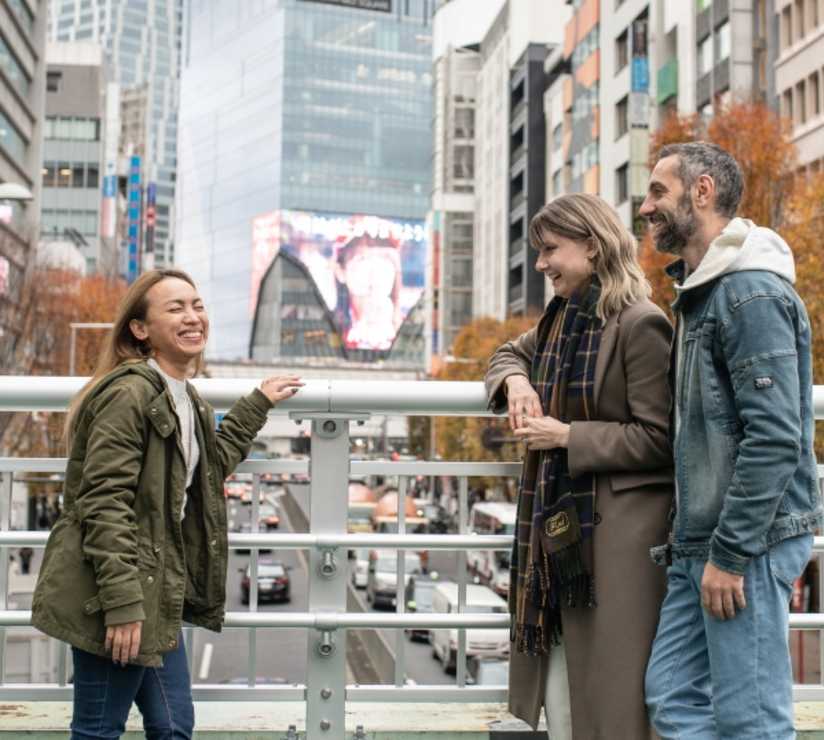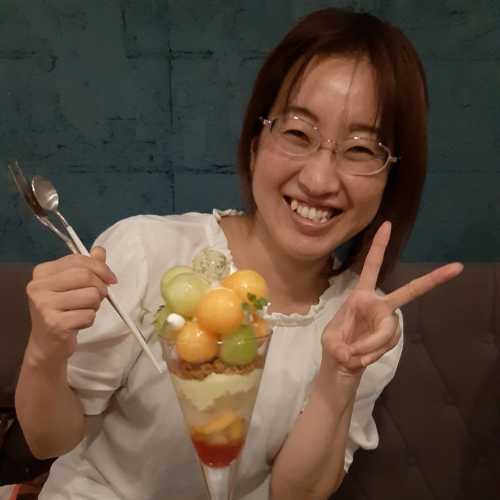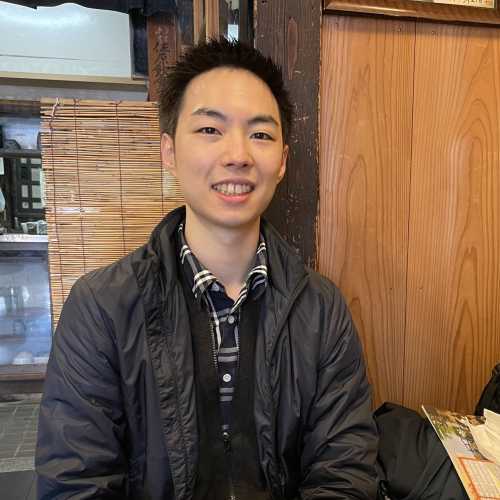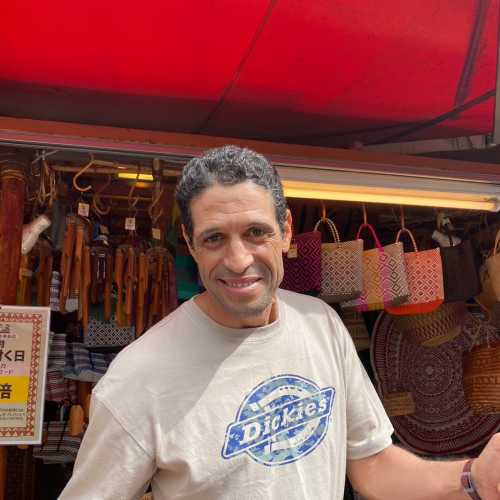Table Of Contents
- What Makes Shibuya Tokyo's Electric Heart?
- The Iconic Shibuya Scramble Crossing Experience
- Shibuya Sky: The City's Most Breathtaking Observatory
- Hachiko: The Story Behind Japan's Most Famous Dog
- Shopping Paradise: Shibuya 109 and Tower Records
- Miyashita Park: Shibuya's Elevated Urban Escape
- Yoyogi Park and Meiji Shrine: Sacred Meets Natural
- Harajuku and Takeshita Street: Fashion Laboratory
- Game Centers and Digital Entertainment Culture
- Hidden Bars and Nightlife Culture
- Food Culture: Sushi and Beyond in Shibuya
- Architecture and Urban Innovation
- Planning Your Perfect Shibuya Day
- Connecting Shibuya to 7 days in Tokyo
- What You'll Remember Most
The neon signs flicker to life as evening approaches, painting Shibuya in electric blues and cotton candy pinks. I'm standing at the edge of the world's busiest pedestrian crossing, watching thousands of people surge forward in perfect, chaotic harmony. This is Tokyo at its most concentrated—a neighborhood that pulses with such intensity, you can practically feel the city's heartbeat beneath your feet.
Shibuya isn't just a district; it's the city's electric soul made manifest. Every corner tells a story of modern Japan, where ancient traditions dance with cutting-edge innovation, where food vendors serve steaming bowls next to flagship stores that redefine retail theater. After spending countless days exploring this vibrant maze, I've discovered that the best things to do in Shibuya Tokyo aren't just activities—they're glimpses into a way of life that moves at light speed yet somehow maintains its own rhythm. From cultural experiences to entertainment options, the fun things to do in Shibuya Tokyo reflect this district's unique ability to blend tradition with innovation.
What Makes Shibuya Tokyo's Electric Heart?
The energy hits you the moment you exit Shibuya station. It's like being plugged directly into the city's main electrical grid. The cacophony of sounds—train announcements echoing in Japanese and English, pedestrian crossing chimes, distant conversations in a dozen languages—creates a symphony that's uniquely Shibuya.
This isn't your typical tourist destination where you check off monuments and move on. Shibuya demands participation. It's easy to reach from other parts of the metropolis—just hop on the JR Yamanote Line, Tokyo metro Ginza Line, or other major train lines, making it convenient to reach from Tokyo station or Shinjuku. You don't just visit the Shibuya crossing; you become part of its daily ballet. You don't simply shop at Shibuya 109; you immerse yourself in youth culture that's setting trends worldwide.
The district sprawls across multiple levels—underground shopping complexes connected to the metro system, street-level chaos that never pauses, and sky-high observation decks offering perspective on the beautiful mayhem below. Near the station, you'll find many shops like Loft, Don Quijote, Daiso, Muji, and Uniqlo, making it a prime spot for shopping. Each layer reveals different facets of urban life, from salary workers grabbing coffee before disappearing into subway tunnels to Harajuku fashion enthusiasts heading toward Takeshita street.
The Iconic Shibuya Scramble Crossing Experience
When Is the Best Time to Experience the Crossing?
Standing at the edge of Shibuya scramble crossing for the first time, I understood why this intersection has become the city's most photographed spot. The crossing transforms throughout the day like a living organism responding to urban rhythms.
Early morning brings the salary worker surge—thousands of commuters in dark suits moving with military precision. There's poetry in their synchronized steps, briefcases swinging in unison, nobody breaking stride despite the apparent chaos. By 8 AM, the crossing handles over 3,000 people per light cycle.
But it's during evening rush when Shibuya scramble truly earns its reputation. Between 6 and 8 PM, the crossing becomes a river of humanity flowing in all directions simultaneously. People crossing from every angle—toward Shibuya station, away from it, diagonal routes that somehow work despite defying logic.
Secret Viewing Spots and Cultural Significance
Everyone knows about Shibuya sky, but I've discovered viewing angles that capture the crossing's energy without crowds or entrance fees. The second floor Starbucks overlooking the crossing offers front-row seats to the daily show. Grab a coffee and claim a window seat—you'll have an intimate view of people crossing below while staying warm and caffeinated.
The famous intersection isn't just a traffic solution—it's a metaphor for modern Japan. Despite apparent chaos, people rarely bump into each other. There's an unspoken choreography at work, a collective awareness that allows thousands of strangers to navigate the same space harmoniously. This intersection embodies the Japanese concept of reading the air, understanding social cues and adjusting behavior accordingly.
Looking for a private city experience in Tokyo?
Explore the city with a local who plans a private day just for you; no groups, no scripts.
Shibuya Sky: The City's Most Breathtaking Observatory
After navigating the streets below, ascending to Shibuya sky feels like stepping into another dimension. The elevator ride to the 46th floor of Shibuya scramble square builds anticipation, you can feel your ears pop as the metropolis shrinks below.
The outdoor observation deck offers unobstructed 360-degree views that change dramatically with light. During daylight hours, you can trace urban sprawl extending toward distant mountains on clear days. The city spreads out like a circuit board, all geometric precision and organized complexity.
But it's during the blue hour; that magical time just after sunset when the sky deepens to rich indigo, that Shibuya sky truly captivates. Tokyo transforms into a galaxy of lights stretching to every horizon. Neon signs flicker to life, traffic streams become rivers of red and white light, and the metropolis reveals its nocturnal personality.
Professional photographers often visit during weekday mornings when crowds are minimal and morning light creates crisp conditions. The western side offers the best sunset views, with distant peaks silhouetted against the sky when visibility permits.
Hachiko: The Story Behind Japan's Most Famous Dog
Every visitor to Shibuya encounters the Hachiko statue, but few understand the profound story behind this bronze tribute. Hachiko's tale isn't just about a dog—it's about loyalty, loss, and the human need to believe in unwavering devotion.
Professor Hidesaburo Ueno adopted Hachiko in 1924, and every day the Akita would accompany his master to Shibuya station, then return in the evening to walk home together. When Professor Ueno died suddenly in 1925, Hachiko waited. For nearly ten years, through all seasons and weather, the loyal dog continued his daily vigil at the station.
The Hachiko exit has become Shibuya station's most famous entrance, serving as a meeting point for millions of people annually. What strikes me most about this space is how it functions as the capital's unofficial town square. In a city where public gathering spaces are precious, the area around Hachiko serves as a democratic meeting ground where salary workers, teenagers, tourists, and locals all converge.
During cherry blossom season, visitors often leave flower petals around the statue—a quiet tribute to faithful waiting that continues to resonate nearly a century later.
Shopping Paradise: Shibuya 109 and Tower Records
Shibuya 109: The Epicenter of Japanese Youth Fashion
Shibuya 109 rises like a cylindrical fashion temple, its curved walls covered in advertisements for brands that Japanese teenagers consider essential. This isn't just a shopping center—it's a cultural laboratory where youth culture experiments with identity through fashion.
Each floor represents different aspects of Japanese youth style, from kawaii culture of lower floors to avant-garde fashion statements higher up. What fascinates me about the building is how it functions as both retail space and social environment. Young shoppers don't just buy clothes—they study styling, observe how other customers put outfits together, and use the space as inspiration for their own fashion evolution.
Tower Records: Music Culture in the Digital Age
In an era when most music stores have disappeared, tower records Shibuya stands as a seven-story monument to physical music culture. The flagship store occupies a prominent corner location, its bright yellow signage visible from blocks away.
Each floor specializes in different genres—J-pop dominates main floors, while jazz and classical occupy quieter upper levels. The vinyl section has expanded significantly, reflecting the global resurgence of record collecting among younger generations. But tower records offers more than merchandise—it hosts live performances, album release events, and listening stations where customers discover new music.
What if your day in Tokyo was planned by someone who knows it — and you?
City Unscripted matches you with a local host who creates a private experience based on your interests, not a set route.
Miyashita Park: Shibuya's Elevated Urban Escape
Miyashita park represents innovative urban planning—when ground-level space is scarce, build upward. This rooftop park stretches above a shopping complex, creating a green corridor suspended above Shibuya's busiest streets.
The park's design reflects Japanese landscape philosophy—every element serves both aesthetic and functional purposes. The running track attracts early morning joggers, while families with children gravitate toward playground areas. Food trucks occupy designated spots, creating impromptu dining areas with city views.
During my regular visits to Miyashita park, I've discovered that different sections attract distinct communities. The eastern end draws athletic types who use the space for serious workouts. The central lawn becomes a social hub where office workers eat lunch and students study between classes.
One of Miyashita park's most appealing features is how it connects to other areas of Shibuya through elevated walkways. You can walk from the park directly to Shibuya station without ever touching street level—a practical solution that provides unique perspectives on the urban landscape below.
Yoyogi Park and Meiji Shrine: Sacred Meets Natural
Yoyogi Park: Nature's Sanctuary Adjacent to Urban Chaos
Just a short walk from Shibuya's neon intensity, Yoyogi park opens like a green universe following entirely different rules. The contrast is intentional and profound—step from Shibuya's concrete canyon into this woodland, and the city's noise fades to a distant hum.
On weekends, the park transforms into an outdoor gallery where street performers, musicians, and artists claim space for impromptu shows. Rockabilly dancers practice their moves near the fountain, while traditional drum circles gather under trees. Cherry blossom season brings hanami parties—elaborate picnics where friends and colleagues celebrate spring's arrival with food and drinks beneath blooming trees.
Meiji Shrine: Sacred Space in the Urban Heart
The seamless transition from Yoyogi park to the sacred grounds creates one of the capital's most remarkable urban experiences. There's no clear boundary—the park's manicured landscapes gradually give way to the shrine's ancient forest.
Entering the shrine complex feels like stepping backward through time. The massive torii gate creates a psychological threshold; beyond this point, urban intensity transforms into something approaching reverence.
The shrine honors Emperor Meiji and Empress Shoken, but meiji jingu functions as more than historical monument—it serves as active spiritual center where traditional ceremonies, weddings, and seasonal festivals maintain connections to Japanese cultural identity.
Early morning visits offer the most authentic experience. Before 8 AM, you'll encounter mainly local visitors—people stopping for quick prayers before work, elderly residents taking their daily walk through forest paths, shrine attendants preparing for ceremonies.
Visiting the sacred grounds involves following customs that reflect Japanese concepts of respect and spiritual awareness. The ritual begins at the torii gate—bow before passing through, and stay to the sides of the path since the center is reserved for kami (spiritual beings).
Harajuku and Takeshita Street: Fashion Laboratory
The transition from ancient tranquility to the colorful chaos happens within a five-minute walk, creating one of the capital's most jarring cultural juxtapositions. Harajuku station serves as the portal between these worlds—sacred and pop, traditional and experimental.
The narrow pedestrian street functions as more than shopping destination—it's an outdoor laboratory where Japanese youth culture experiments with identity through fashion. The street concentrates an incredible density of boutiques, accessory shops, and snack vendors catering to teenagers pushing boundaries of self-expression. Visitors can window shop for the latest trends and unique accessories, enjoying the vibrant displays even without making purchases.
What strikes me about this fashion hub is how it democratizes fashion experimentation. Unlike high-end districts where cost creates barriers, most items here remain affordable for students and young workers, allowing for fashion risk-taking that would be prohibitively expensive elsewhere.
The culinary offerings reflect the area's experimental spirit. Rainbow cotton candy, crepes filled with ice cream and fruit, and character-themed sweets create Instagram-worthy treats that taste as adventurous as they look.
My favorite discovery is the crepe stands that have perfected the art of portable desserts. These aren't simple pancakes with filling—they're architectural marvels combining textures and flavors in ways that shouldn't work but absolutely do.
Tip
We match you with the right host, not just any guide.Want to experience the real Tokyo with someone who lives there?
A fully private experience, planned and led by a local host who tailors the day to you
Game Centers and Digital Entertainment Culture
Game centers in Shibuya offer glimpses into Japanese entertainment culture extending far beyond simple gaming. These multi-story complexes function as social spaces where different generations gather around shared interests, from traditional pachinko to cutting-edge virtual reality experiences.
Ground floors typically house the loudest, most visually spectacular games—racing simulators, fighting games, and rhythm games requiring physical participation. As you ascend, the atmosphere becomes more contemplative. Upper floors often feature puzzle games, traditional arcade classics, and prize games requiring strategy rather than reflexes.
UFO catchers and prize games occupy significant real estate in every game center. Regular players develop techniques for specific machines, studying prize positioning and mechanical claw strength before investing their coins. The prizes reflect current Japanese pop culture—anime characters, mascots from popular franchises, and limited-edition items that can't be purchased elsewhere.
Hidden Bars and Nightlife Culture
As evening approaches, Shibuya reveals a different personality. The daytime energy of shopping and sightseeing gives way to legendary nightlife. Hidden within the district's maze of narrow streets, small bars and izakayas create intimate spaces contrasting sharply with the area's daytime intensity.
Drunkard's alley and similar narrow passages house bars seating fewer than ten people, creating forced intimacy between strangers who might never interact in broader society. These spaces serve as social pressure valves where the day's formalities dissolve into genuine human connection.
Visiting these intimate bars offers insights into Japanese social dynamics invisible during daylight hours. The concept of nommunication, communication through alcohol, allows for conversations and relationship building that would be impossible in more formal settings.
Food Culture: Sushi and Beyond in Shibuya
While the capital's sushi reputation is well-established, Shibuya's culinary scene extends far beyond raw fish. The district's diverse dining landscape reflects both traditional Japanese cuisine and international influences adapted to local tastes.
Sushi in Shibuya ranges from high-end omakase experiences to conveyor belt establishments that make this iconic cuisine accessible to every budget. The best sushi restaurants here source their fish from Tsukiji's outer market daily, ensuring the freshest possible ingredients. For authentic sushi experiences, look for small counter restaurants where the chef prepares each piece individually, explaining the fish's origin and optimal eating method.
Traditional sushi bars in Shibuya offer educational experiences alongside exceptional food. Master chefs often speak some English and enjoy sharing knowledge about different fish types, seasonal availability, and proper etiquette. Many visitors don't realize that sushi should be eaten immediately after preparation—the rice temperature and fish texture are calibrated for that perfect moment.
Modern sushi innovations also flourish in Shibuya, where creative chefs experiment with fusion elements while respecting traditional techniques. Some establishments offer sushi tasting menus that progress from lighter fish to richer varieties, creating a journey through different flavor profiles and textures.
Ramen shops tucked into narrow alleyways serve bowls representing regional styles from across Japan. Each shop develops its own interpretation of classic recipes, creating variations that can only be experienced in specific locations. The competition for customer loyalty has driven innovation that makes Shibuya's ramen scene particularly dynamic.
Restaurants in Shibuya cater to every preference and budget level. Yakitori stalls specialize in grilled chicken preparations showcasing Japanese techniques for maximizing flavor through careful attention to cooking methods and sauce applications. Many restaurants here focus on single ingredients prepared multiple ways—entire establishments dedicated to tofu, mushrooms, or seasonal vegetables.
Izakaya culture thrives in Shibuya, where these Japanese-style pubs serve as social gathering spaces after work hours. These restaurants offer small plates designed for sharing, encouraging conversation and community building over food and drinks.
The ubiquitous automated dispensers provide 24-hour access to everything from hot coffee to complete meals. Hot food machines dispense items that would be impractical in other cultures—fresh ramen, hot sandwiches, even complete bento boxes rivaling restaurant meals.
Vendors near major attractions offer portable versions of restaurant dishes. Takoyaki (octopus balls), yakitori skewers, and imagawayaki (filled pancakes) provide authentic Japanese flavors in forms convenient for eating while walking.
Ready to plan your perfect day in Tokyo?
Start your experienceArchitecture and Urban Innovation
Shibuya's architecture tells the story of rapid modernization and continuing evolution. The district showcases how Japanese cities adapt to limited space through vertical development and efficient land use maximizing functionality while maintaining livability.
Shibuya scramble square represents the latest thinking in mixed-use development—offices, retail, restaurants, and observation facilities integrated into a single complex serving multiple functions simultaneously. The building's design considers pedestrian flow, natural light, and integration with existing transportation infrastructure.
Shibuya's underground network creates a parallel city operating according to different rules than surface streets. Climate-controlled passages connect shopping areas, restaurants, and transportation hubs without requiring exposure to weather or traffic.
These subterranean spaces develop their own ecosystems of businesses catering to commuters and residents who spend significant portions of their days underground. Coffee shops positioned near train platforms, convenience stores operating 24 hours, and services like dry cleaning can be accessed without detours to street level.
Planning Your Perfect Shibuya Day
Morning: Sacred Beginnings
Begin your Shibuya adventure early, before the district fully awakens. Start at the sacred grounds around 7 AM when morning mist still clings to forest paths and you can experience the spiritual atmosphere without crowds. The early light filtering through the torii gate creates photographic opportunities that disappear once tour groups arrive.
From the shrine, walk through Yoyogi park where morning joggers and tai chi practitioners use the space for exercise routines. The park's morning energy feels distinctly local, you'll share space with residents starting their daily routines rather than fellow tourists checking items off itineraries.
Midday: Urban Energy
By 10 AM, position yourself at Shibuya crossing to witness the morning commuter surge. The energy builds gradually, then explodes as office workers, students, and shoppers converge on this single intersection. Take time to observe the choreography, how thousands of people navigate the same space without collision.
Ride the elevator to Shibuya sky for aerial perspective on the chaos below. The observation deck provides context for understanding how Shibuya fits into the broader urban geography. Clear days offer views extending toward distant mountains, while any weather provides spectacular cityscapes.
Descend to street level for shopping exploration at the fashion temple and tower records. These destinations offer insight into Japanese youth culture and music scene respectively. Don't feel pressured to purchase—the browsing experience itself provides cultural education.
Afternoon and Evening: Culture and Cuisine
Transition to the fashion district via Harajuku station, experiencing the contrast between Shibuya's mainstream energy and Harajuku's experimental subcultures. Allow at least two hours for exploration—the narrow pedestrian street requires slow navigation due to crowds, but this forced pace allows for detailed observation of fashion trends and social dynamics among young residents.
Return to Shibuya via Miyashita park, using elevated walkways to avoid street-level congestion. As evening approaches, Shibuya's character shifts toward its nightlife personality. Start with dinner at one of the district's many restaurants, options range from traditional Izakayas to international cuisine adapted for Japanese tastes.
The golden hour provides optimal conditions for photography around the crossing and major landmarks. The combination of natural sunset light and emerging neon creates dramatic contrasts that capture Shibuya's dual nature.
Connecting Shibuya to 7 days in Tokyo
Shibuya functions as an ideal base for exploring greater areas due to its central location and excellent transport connections. The district's multiple train lines provide direct access to every major destination, making it possible to experience Shibuya's energy while using it as a launching point for broader Tokyo experiences.
7 days in Tokyo means Shibuya is just the place to travel from in the morning. A typical day might begin with early morning exploration of the shrine grounds, followed by breakfast, then a train ride to the central station for business district exploration, returning to Shibuya for afternoon shopping and evening entertainment. This pattern allows you to experience the city's diversity while maintaining Shibuya as your emotional and logistical anchor.
The metro system makes these transitions seamless. From Shibuya station, you can reach Asakusa in 20 minutes, Ginza in 15 minutes, or Shinjuku in just 7 minutes. This connectivity allows for spontaneous exploration while ensuring you can always return to Shibuya's familiar energy.
Peak hours (7-9 AM and 5-7 PM) bring intense crowding that can be overwhelming for first-time visitors. Planning major movements outside these windows makes navigation much more pleasant and allows for better appreciation of the station's architectural complexity.
What You'll Remember Most
After countless days spent exploring Shibuya, certain moments stand out with unusual clarity. The morning silence at the sacred grounds before the city fully awakens. The synchronized chaos of people crossing during rush hour. The view from Shibuya sky as the metropolis's lights stretch to every horizon.
But perhaps most memorable are the smaller human moments—the elderly man feeding pigeons in Yoyogi park, teenage friends sharing elaborate crepes on the fashion street, the salary worker pausing at Hachiko statue before disappearing into the metro system.
Shibuya succeeds because it contains multitudes. Ancient forest and neon signs. Sacred spaces and shopping centers. Moments of Zen contemplation and sensory overload. Traditional ceremonies and experimental fashion. It's the capital concentrated into a single district that somehow maintains coherence despite containing contradictions that shouldn't coexist.
The energy never stops, but it changes constantly. Morning commuters give way to teenage shoppers, who yield to evening diners, who merge with late-night revelers. Each group brings different energy to the same spaces, creating a district that reinvents itself multiple times daily while maintaining its essential character.
This is what makes the top things to do in Shibuya more than simple activities; they're opportunities to witness a way of life that exists nowhere else on earth. In Shibuya, you don't just visit the capital, you participate in its daily creation.
Emily Sasaki is a travel writer who has been exploring the city's neighborhoods for over a decade. When not wandering the streets, she can be found in her hotel room planning the next day's adventures or searching for the perfect pink-hued dessert to photograph against the neon backdrop.
What if your day in Tokyo was planned by someone who knows it — and you?
City Unscripted matches you with a local host who creates a private experience based on your interests, not a set route.
Want to experience the real Tokyo with someone who lives there?
A fully private experience, planned and led by a local host who tailors the day to you











